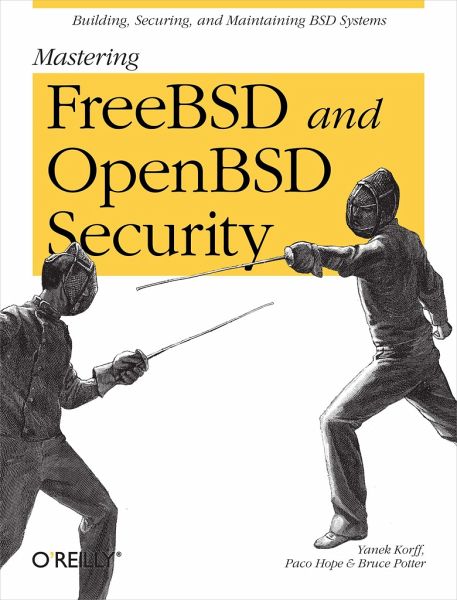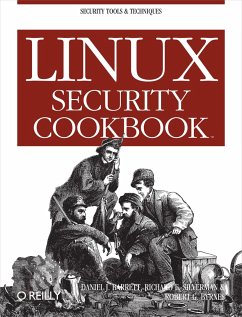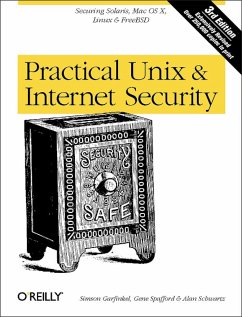Nicht lieferbar

Mastering FreeBSD and OpenBSD Security
Versandkostenfrei!
Nicht lieferbar
Weitere Ausgaben:
FreeBSD and OpenBSD are increasingly gaining traction in educational institutions, non-profits, and corporations worldwide because they provide significant security advantages over Linux. Although a lot can be said for the robustness, clean organization, and stability of the BSD operating systems, security is one of the main reasons system administrators use these two platforms.
There are plenty of books to help you get a FreeBSD or OpenBSD system off the ground, and all of them touch on security to some extent, usually dedicating a chapter to the subject. But, as security is commonly named as the key concern for today's system administrators, a single chapter on the subject can't provide the depth of information you need to keep your systems secure.
FreeBSD and OpenBSD are rife with security "building blocks" that you can put to use, and Mastering FreeBSD and OpenBSD Security shows you how. Both operating systems have kernel options and filesystem features that go well beyond traditional Unix permissions and controls. This power and flexibility is valuable, but the colossal range of possibilities need to be tackled one step at a time. This book walks you through the installation of a hardened operating system, the installation and configuration of critical services, and ongoing maintenance of your FreeBSD and OpenBSD systems.
Using an application-specific approach that builds on your existing knowledge, the book provides sound technical information on FreeBSD and Open-BSD security with plenty of real-world examples to help you configure and deploy a secure system. By imparting a solid technical foundation as well as practical know-how, it enables administrators to push their server's security to the next level. Even administrators in other environments-like Linux and Solaris-can find useful paradigms to emulate.Written by security professionals with two decades of operating system experience, Mastering FreeBSD and OpenBSD Security features broad and deep explanations of how how to secure your most critical systems. Where other books on BSD systems help you achieve functionality, this book will help you more thoroughly secure your deployments.
There are plenty of books to help you get a FreeBSD or OpenBSD system off the ground, and all of them touch on security to some extent, usually dedicating a chapter to the subject. But, as security is commonly named as the key concern for today's system administrators, a single chapter on the subject can't provide the depth of information you need to keep your systems secure.
FreeBSD and OpenBSD are rife with security "building blocks" that you can put to use, and Mastering FreeBSD and OpenBSD Security shows you how. Both operating systems have kernel options and filesystem features that go well beyond traditional Unix permissions and controls. This power and flexibility is valuable, but the colossal range of possibilities need to be tackled one step at a time. This book walks you through the installation of a hardened operating system, the installation and configuration of critical services, and ongoing maintenance of your FreeBSD and OpenBSD systems.
Using an application-specific approach that builds on your existing knowledge, the book provides sound technical information on FreeBSD and Open-BSD security with plenty of real-world examples to help you configure and deploy a secure system. By imparting a solid technical foundation as well as practical know-how, it enables administrators to push their server's security to the next level. Even administrators in other environments-like Linux and Solaris-can find useful paradigms to emulate.Written by security professionals with two decades of operating system experience, Mastering FreeBSD and OpenBSD Security features broad and deep explanations of how how to secure your most critical systems. Where other books on BSD systems help you achieve functionality, this book will help you more thoroughly secure your deployments.










